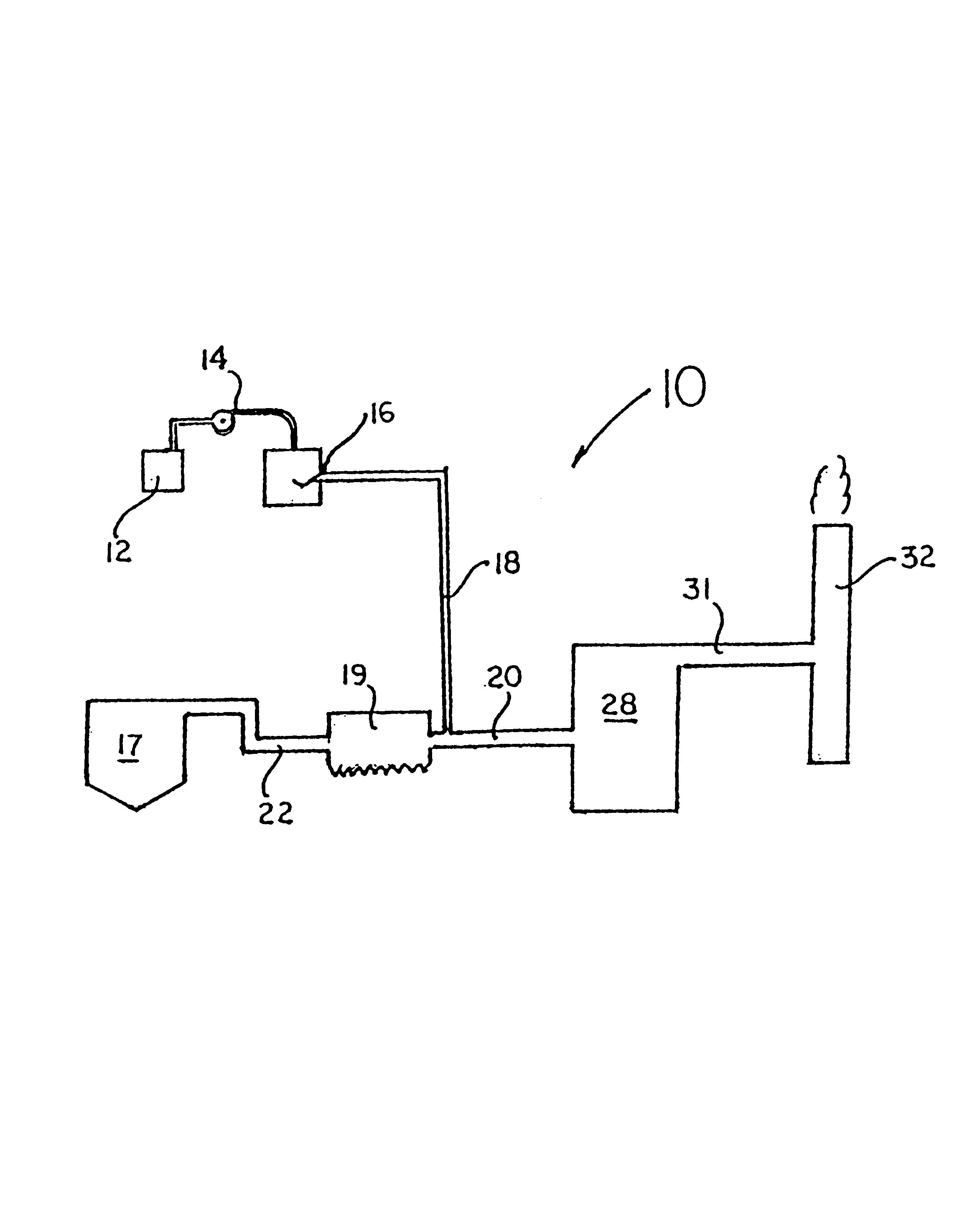Method for combined removal of mercury and nitrogen oxides from off-gas streams
a technology of mercury and nitrogen oxides, which is applied in the direction of separation processes, dispersed particle separation, chemistry apparatus and processes, etc., can solve the problems of high cost, long time-consuming and laborious, and the control of mercury (hg) is a national and international issue, so as to reduce the extent of oxidation, and enhance the oxidation of elemental mercury
- Summary
- Abstract
- Description
- Claims
- Application Information
AI Technical Summary
Benefits of technology
Problems solved by technology
Method used
Image
Examples
examples
[0054]A simulated gas stream was supplied. The source of Hg0 was a calibrated and certified permeation tube from VICI Metronics, Santa Clara, Calif., which was placed in a constant-temperature water bath controlled to ±0.5° C. For the majority of the tests, the Hg0 concentration in the gas was about 40 μg / m3 in the complete flue gas mixture. Bottled, high-purity (99.998%) nitrogen gas flowed around the permeation tube to produce a gas stream with a constant concentration of Hg0. When other flue-gas components were desired, this stream was combined with another gas stream containing nitrogen and components such as carbon dioxide, nitric oxide, and sulfur dioxide. For example, when nitric oxide was present, carbon dioxide was used as a carrier gas for the nitric oxide. Carbon dioxide, nitric oxide, and sulfur dioxide were obtained from bottled gases without further purification. The nominal purities for these gases were as follows: carbon dioxide, 99.5%; nitric oxide,>99.0%; and sulfu...
PUM
| Property | Measurement | Unit |
|---|---|---|
| weight ratio | aaaaa | aaaaa |
| temperature | aaaaa | aaaaa |
| temperature | aaaaa | aaaaa |
Abstract
Description
Claims
Application Information
 Login to View More
Login to View More - R&D
- Intellectual Property
- Life Sciences
- Materials
- Tech Scout
- Unparalleled Data Quality
- Higher Quality Content
- 60% Fewer Hallucinations
Browse by: Latest US Patents, China's latest patents, Technical Efficacy Thesaurus, Application Domain, Technology Topic, Popular Technical Reports.
© 2025 PatSnap. All rights reserved.Legal|Privacy policy|Modern Slavery Act Transparency Statement|Sitemap|About US| Contact US: help@patsnap.com


